Sowing the Seeds of Love: Umbraco's Codegarden 2025 Celebrates 20 Years of Community and Innovation
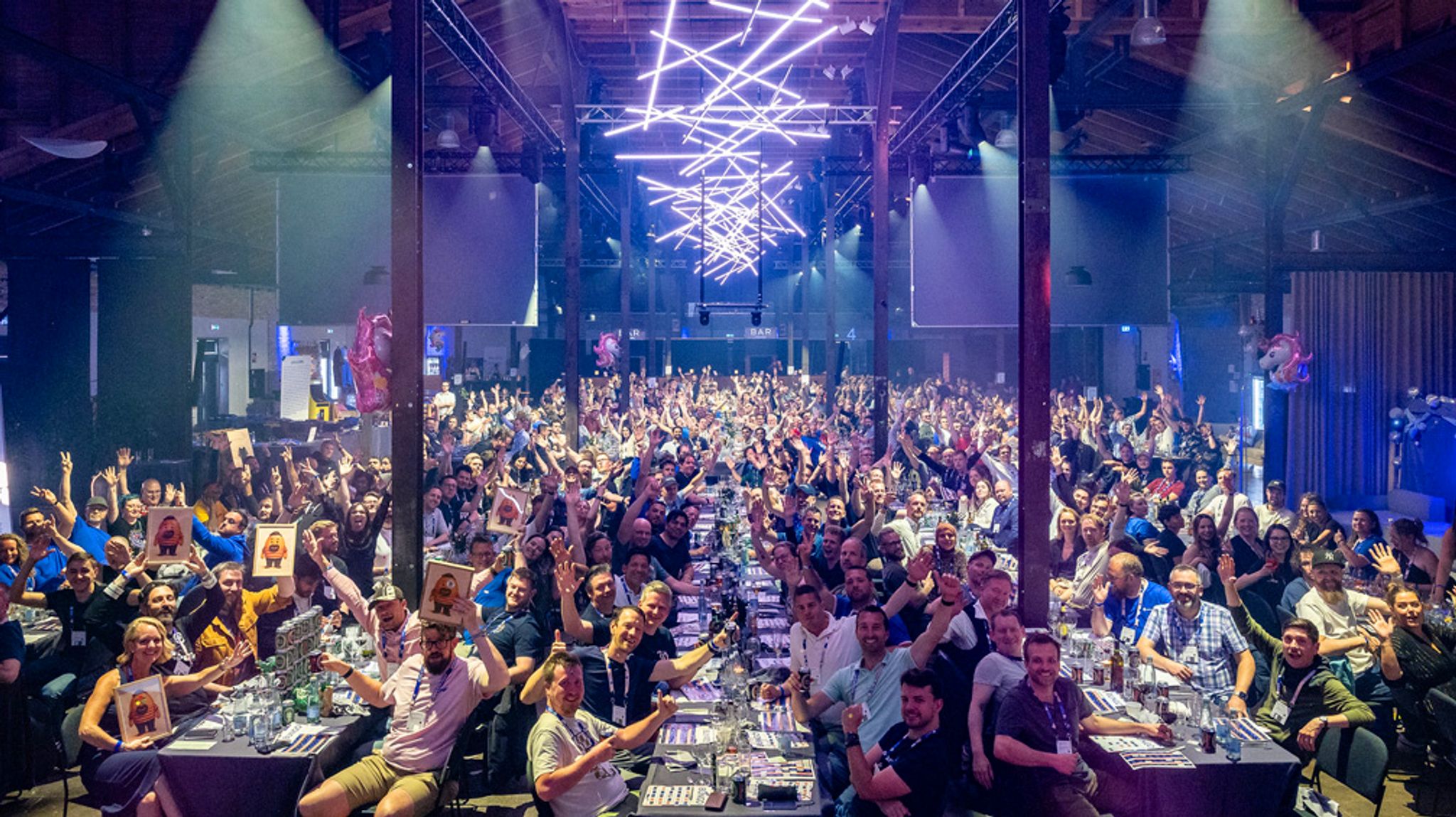
It was sweet music as the open source CMS rang in its second decade of “codegardening” with its global community of builders, announcing dynamic new features in the evolving era of AI.
Highlights
- Umbraco's annual conference, Codegarden 2025, was recently held in Odense, Denmark
- Developers from around the globe attended both in person and virtually
- The event offered a wide array of speakers, sessions, workshops, and success stories
- Several key announcements were made around AI and orchestration
- We sat down CTO Filip Bech-Larsen and Senior Product Manager Bolette Kern for insights
“Funny how time flies…”
If you’re a fan of the eclectic ‘80s musical duo Tears for Fears, you might recognize this iconic stinger from their mega radio hit, “Head Over Heels.”
It was more than a clever song title. If you haven’t heard it in a while, give it a fresh spin. Betwixt the lyrics and the ambience, you’ll feel the swell of intended disorientation, like you’re upside down. Inside out. And feeling powerless in the face of change.
As the song fizzles, that distorted lyric about time drifts slowly through the static, reminding us that everything is ephemeral, from the highs to the heartbreaks.
This mad world will continue to change and evolve around us, but songs can be anchors for sanity. They cross chasms, inspire connections, and unite us as people. And classics like “Head Over Heels” make us feel something that’s a bit torrid, uncomfortable, joyous – and even magical.
In many ways, the phenomenon of open source software communities has a similar vibe. By cranking up the code, developers play their own music, finding shared wavelengths across threads and forums. They revel in the creation of new things and rally around the advancements they make as a collective.
Like good songs, it can be a beautiful orchestration.
For twenty years now, Umbraco’s Codegarden has been a sort of rockstar concert venue for its own open source .NET community. Members gathered a little over a week ago in Odense, Denmark – the company’s hometown – to celebrate “The Friendly CMS" and the two-decade milestone of this storied event. And by all accounts, it was quite a party.
Despite its eponymous name, Codegarden isn’t just for coders. It’s a digital magnet for everyone in the Umbraco DX ecosystem. This includes designers, strategists, and agency leaders who want to observe new thinking, challenge and validate ideas, explore new features, and add their unique voice to help shape the future.
With well over 200,000 active members and thousands of Discord users, the Umbraco community is a hard-earned and enviable cohort within the content management industry. It's revered for its positivity – proof that the whole “friendly CMS” thing is true. The community also hosts regular meetups, making it sticky and stable.
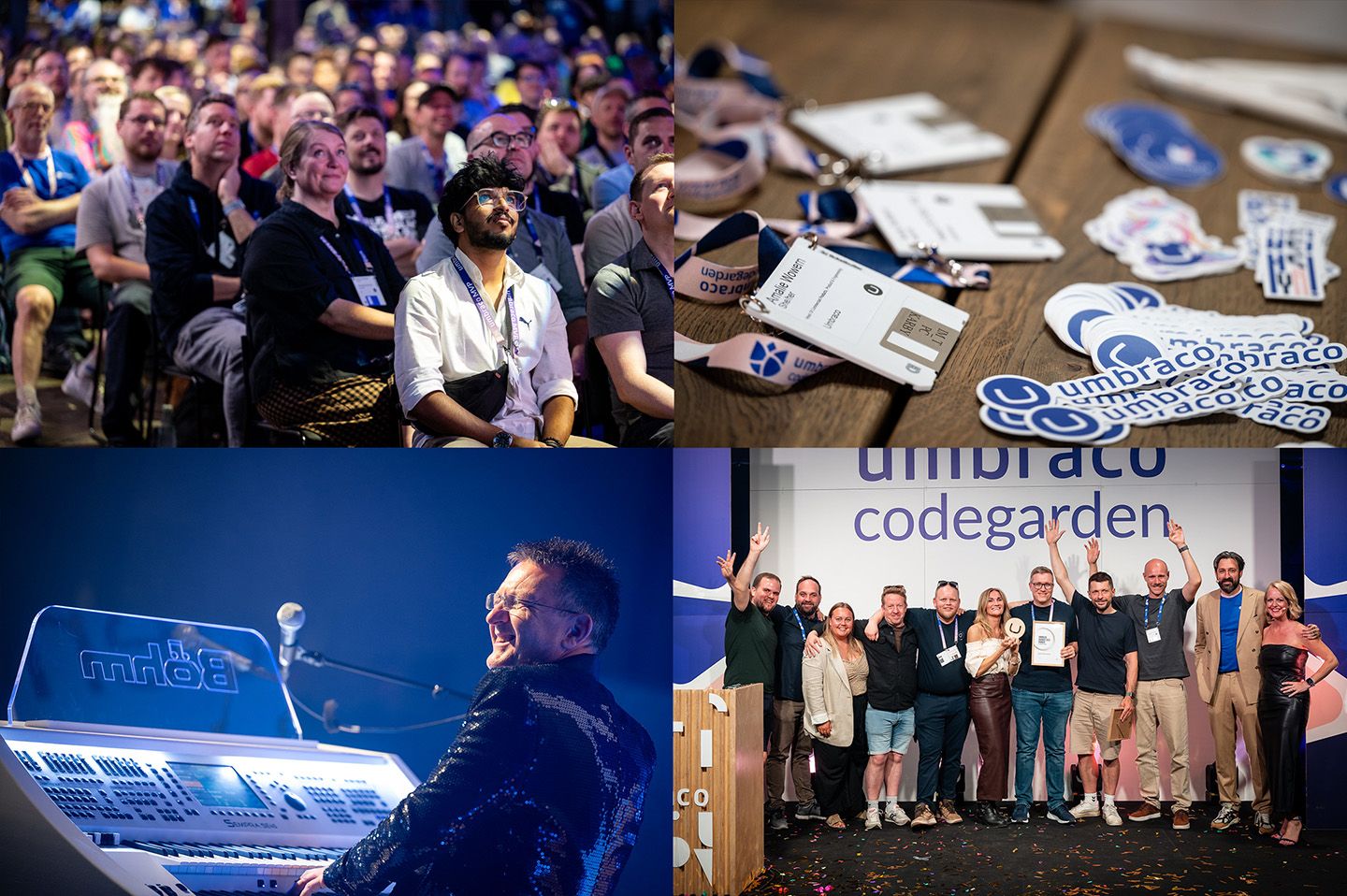
Scenes from Umbraco Codegarden 2025. Source: Umbraco
I attended Codegarden 2025 virtually from a slightly disadvantaged time zone (I was up at 3 AM in New York for the opening bell). I wish I’d been on the ground for many reasons, but snagging one of the retro 3.5” floppy disk nametags might have been worth the trip. There were hundreds of people in the main hall in Odense, and presumably many more phoning in as I did, waiting to hear from leaders and luminaries about what’s ahead. You can watch the entire opening act here:
Despite the geographic barrier, I found it easy to get energized around the content – even if I was missing the crowd effect. It’s like watching a Tears for Fears concert in your living room, knowing full well that the audience energy would take things to another level.
And much like another of that band’s famous tunes, Umbraco was “Sowing the Seeds of Love” across this swelling ecosystem of passionate builders, delivering a killer setlist of hits. Here’s a bit of what I saw.
Playing power chords with real-world success
Hosted in part by the incomparable Karla Santi, CEO of U.S. agency Blend Interactive – and Andy Eva-Dale, CTO at London-based Tangent – Codegarden brought a diverse mix of dynamic keynotes, business workshops, and compelling use cases to its community of attendees.
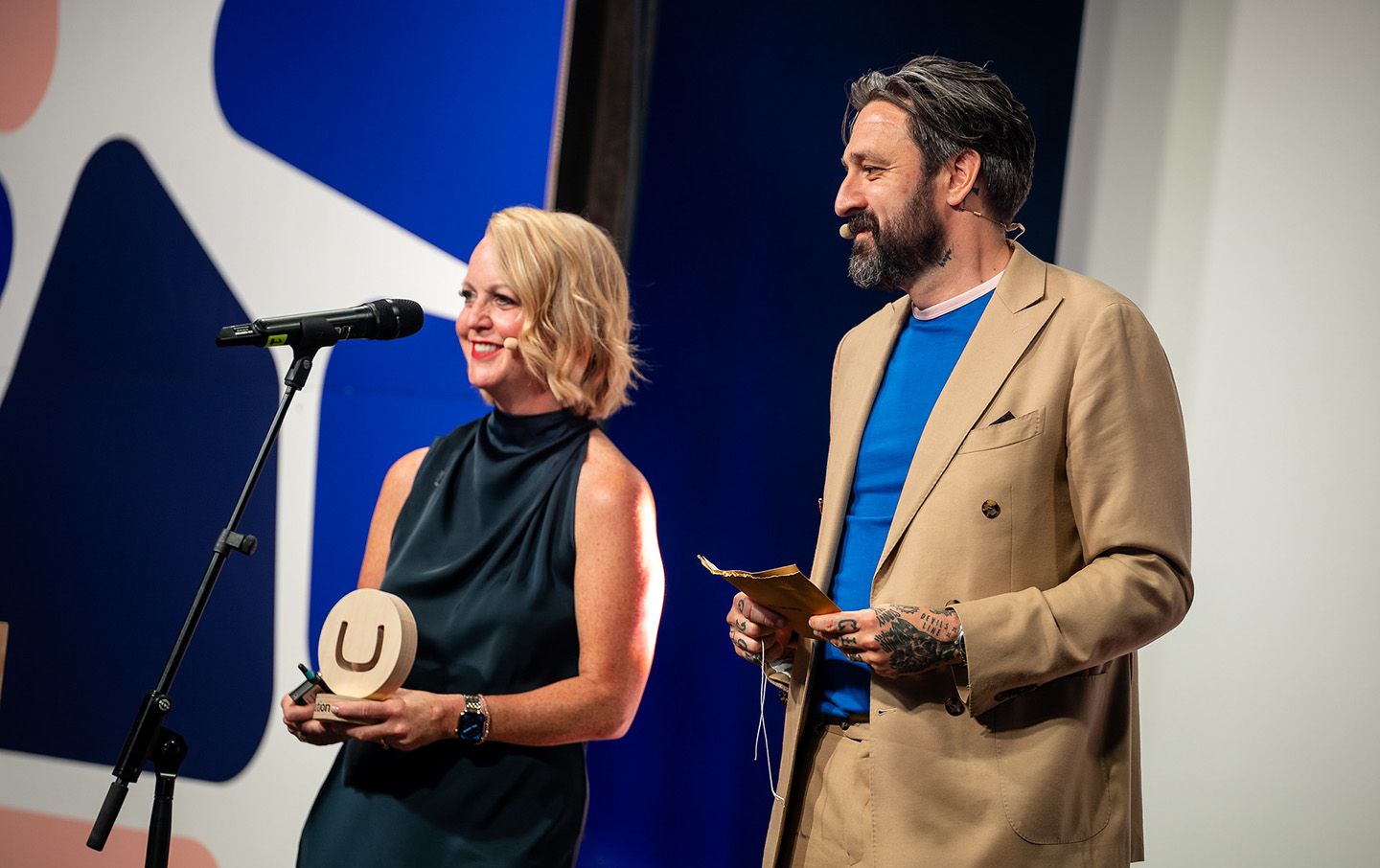
Karla Santi and Andy Eva-Dale at Codegarden 2025. Source: Umbraco
Right from the get-go, the virtual chat sessions were an active pastiche, with participants musing about what announcements might be on the docket. CEO Mats Persson, whom I've previously interviewed, helped set the tone around the “CMS evolution” and how this changing ecosystem is benefiting users. He also spoke about the impact of AI, and where the opportunities exist for Umbraco as a central foundation for the overall infrastructure.
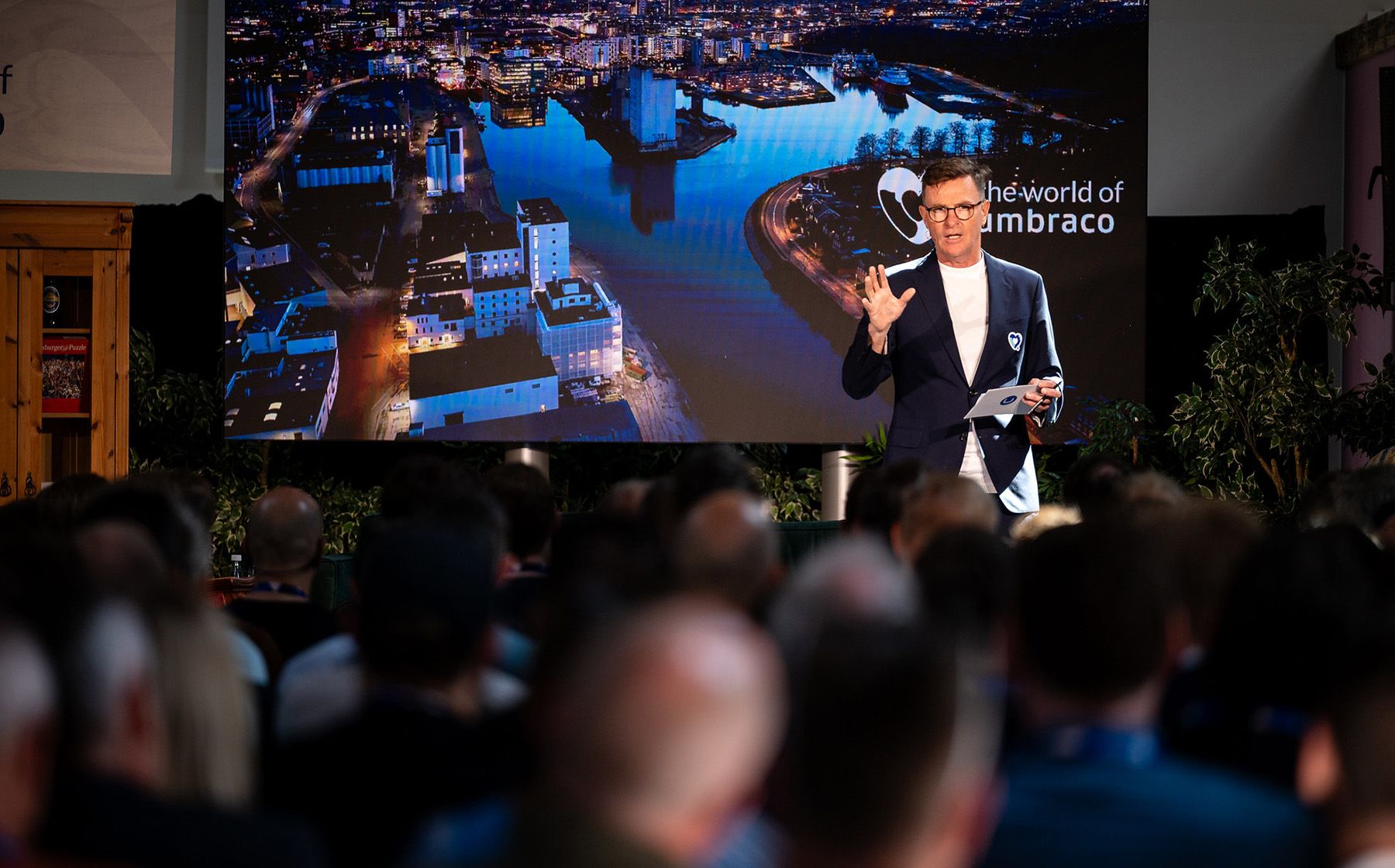
Umbraco CEO Mats Persson at Codegarden 2025. Source: Umbraco
Over the course of the next two days, I popped across a number of the scheduled events, and found most to be incredibly compelling, enlightening, and yes… fun. I really dug the insights gleaned from Eli Holderness during their “You Shall Not Password” primer, which offered a perspective on puzzling security considerations like Magic Links.
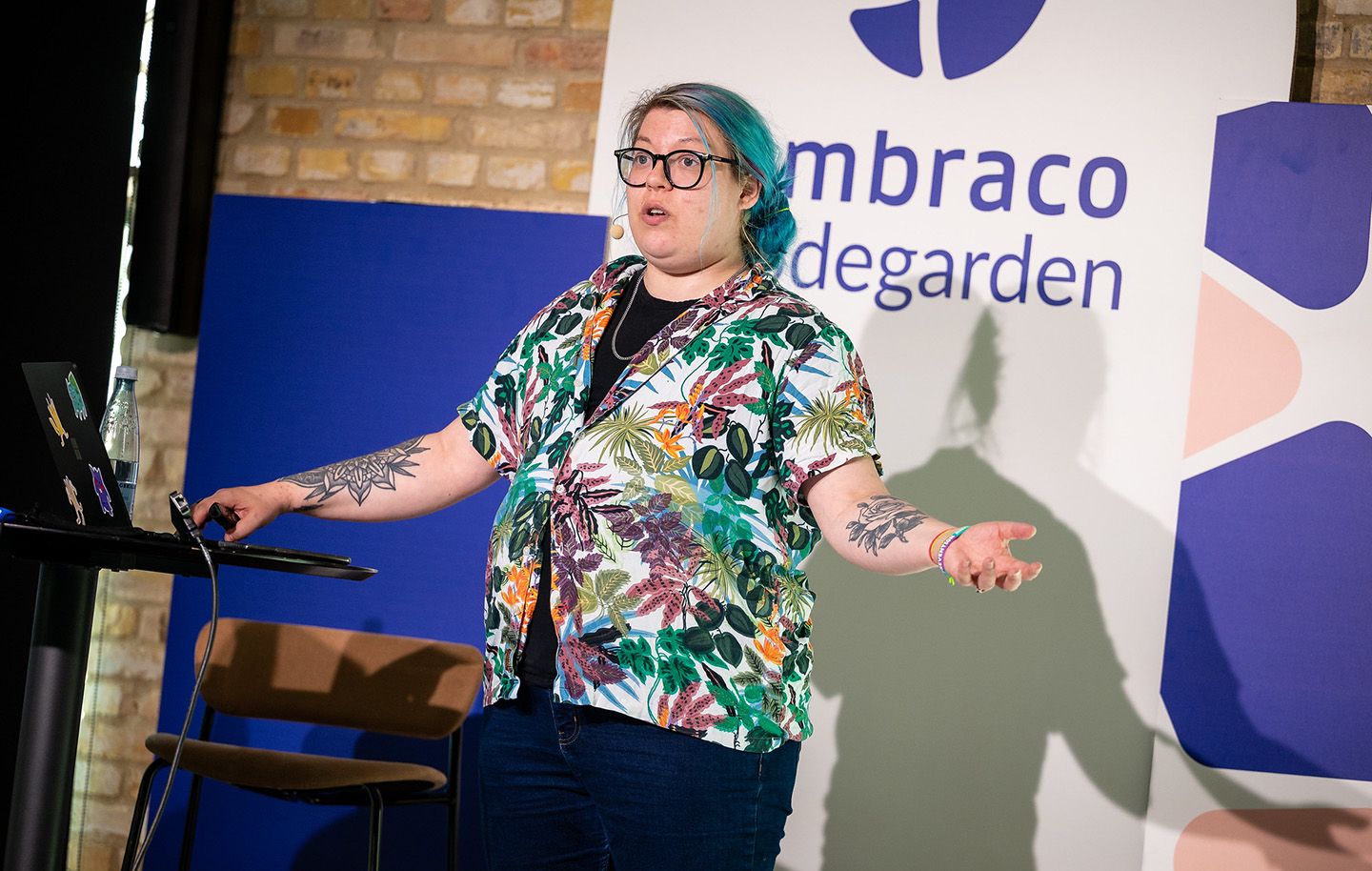
Eli Holderness at Codegarden 2025. Source: Umbraco
I especially loved Colin McMillan’s “A Toast to Umbraco: Crafting a Perfect Whisky Experience.” The owner and technical director at UK-based Factory73 delivered a, shall we say, “intoxicating” use case for the Dalmore Guild, which provides a community resource for whisky connoisseurs around the globe. It’s an elegant portal, both from a design and functional perspective, and really demonstrated what’s possible with Umbraco – from adding an age gate to multi-lingual capabilities to a secure login.
As Colin reinforced, we’re not building websites anymore. We're building digital experiences. To see this evolution play out around a high-end consumer brand – with an ecosystem powered by Umbraco – was pretty impactful.
Harmonizing around key announcements
On the product side, there were some well-received announcements and roadmap updates regarding improved backoffice features. This includes enhanced Docker support, accessibility, and scalability, as well as a potent track for search.
Improvements were also announced to Umbraco Heartcore (its headless offering), Umbraco Commerce, and the data-driven conversion optimization capabilities within Umbraco Engage, which was rebranded after the acquisition of uMarketingSuite late last year. This is considered a game changer for the company as it ratchets up its core data and personalization features as part of its broader DXP play.
According to Umbraco, its Cloud growth is jammin’ as more customers signal a need for high availability performance. Enhanced flexibility and configurable environments are putting it over the top with users, and they’ve expanded their cloud footprint to include a North American region in Toronto.
Shining the spotlight on Umbraco MVPs
On the human side, there was a big hurrah for the latest crop of Umbraco MVPs, with 111 announced (26 net new and dozens renewed). This included the addition of Marc Love of uSkinned, a past winner of our CMS Critic Awards, and a member of the Umbraco Package Hall of Fame for 2025. The final day also featured the annually anticipated on-site hackathon.
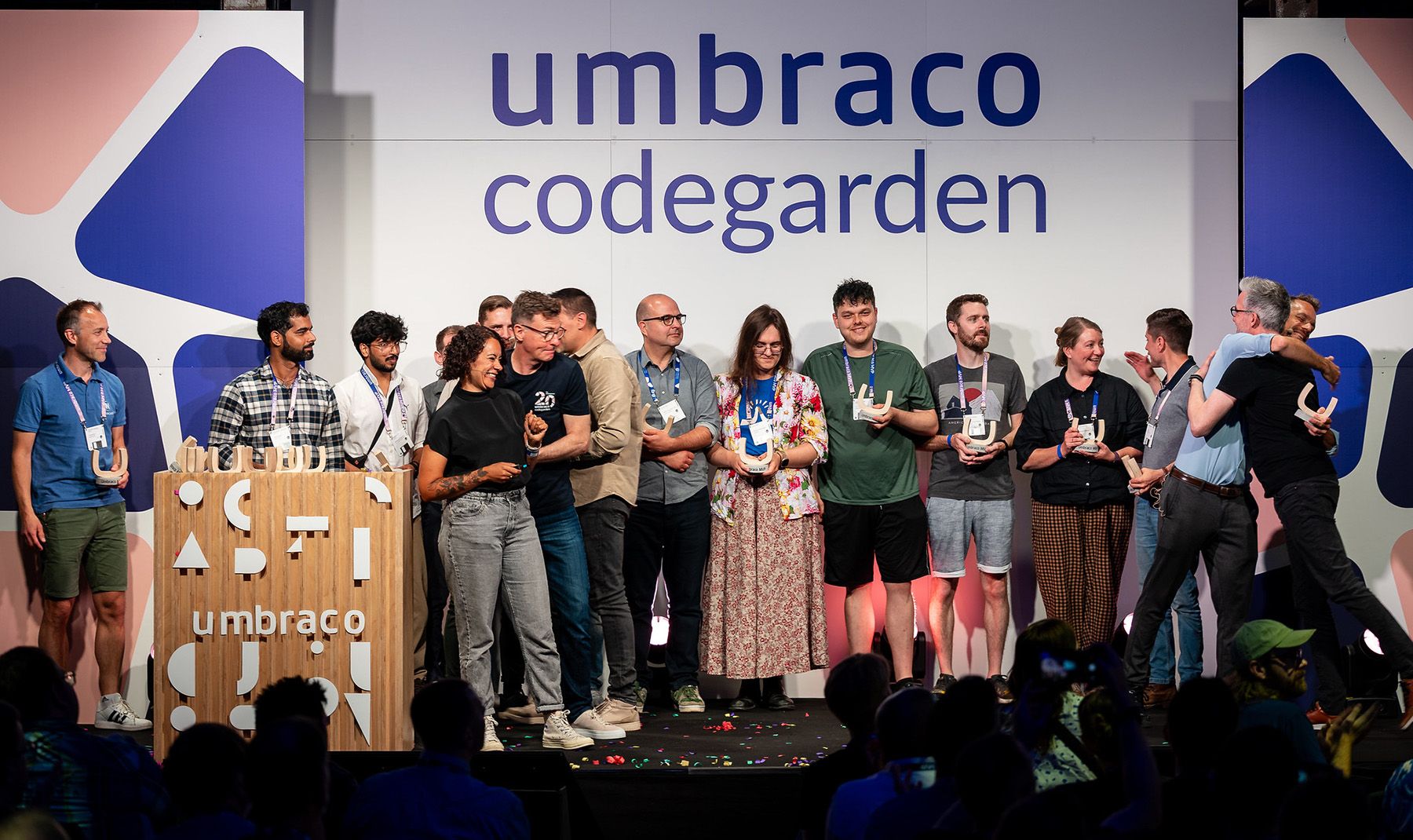
Umbraco MVPs on stage at Codegarden. Source: Umbraco
As you can imagine, there’s simply too much to cover at a granular level, so I'm focusing on some of the big takeaways from this milestone edition of Codegarden. For a better snapshot, I tapped Umbraco’s CTO Filip Bech-Larsen, and Senior Product Manager, Bolette Kern.
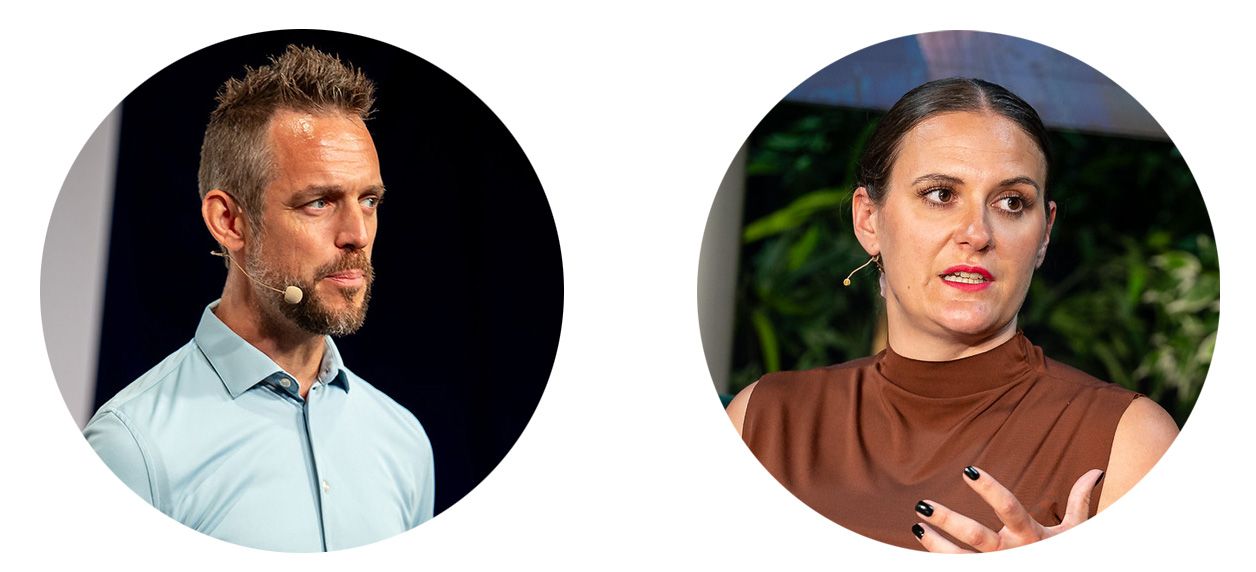
Filip Bech-Larsen and Bolette Kern. Source: Umbraco
I’ve spoken with Filip in the past, and I recently met with Bolette in Germany at the Boye & Company CMS Summit. I had a chance to download their perspective on a couple of Umbraco’s new features, and why users will be head over heels about what’s ahead.
Singing a different scale in the AI chorus
If you’ve been following my exploits, you already know that I’ve attended multiple vendor conferences this year, as well as several industry events – and AI was, as you might guess, the star of every show. That makes sense given the elevated urgency around agentic strategies and agent-based models, particularly in the realm of content and digital experiences.
At last year’s Codegarden, Filip and team laid out some of the framework for Umbraco’s forward-thinking position as an “open source platform for AI,” which is beginning to bear fruit. As he told me, this foundation is key to providing more of the flexibility that developers crave.
“Our strategy is a little bit different to most of our competitors, and it basically comes down to Umbraco being a platform that you build on top of, instead of being the tool that does everything for you,” he explained. “Like the Lego bricks metaphor, we give you the base plate, and all the blocks, and then you build whatever you want on top of that. And since we're open source, we can't really take a commercial dependency and just integrate directly with ChatGPT because that's not how open source licensing works. So we have a few different tracks around this.”
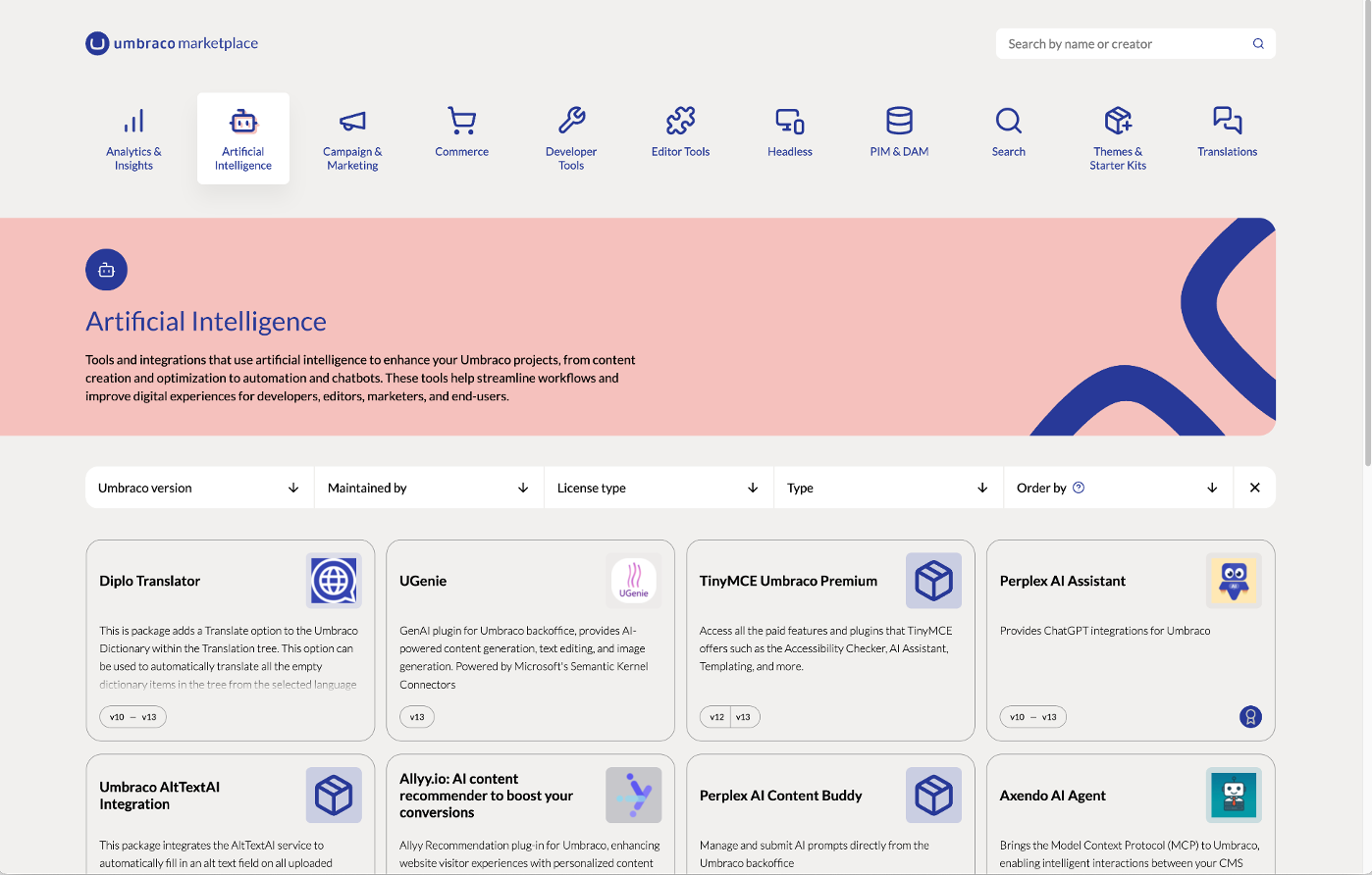
Umbraco Marketplace. Source: Umbraco
While some of the basic tooling for generative AI capabilities has been within reach, such as control planes for text or image creation, there are now easy-to-access packages on their Umbraco Marketplace for adding features directly into projects with the ability to bring your license key – for which there's no cost.
Pumping up the AI volume with MCP
Taking the agentic focus even further, the other big AI announcement at Codegarden was the rollout of Umbraco’s new MCP (Model Context Protocol) server, which has become the AI soup-du-jour for every brand and vendor across the digital landscape.
There are now thousands of MCP servers churning, and countless agent applications that are already being deployed using this framework. You can get a sense at how robust the ecosystem has become at the MCP Servers site – a central clearinghouse for options.
As Filip described, the use cases for MCP will enable agentic automation in entirely new ways, many of which will solve real problems for users across Umbraco’s CMS and DXP.
“We've essentially wrapped the entire management API, so anything you can do from the UI, anything you can do inside of Umbraco, you can now do via an MCP server,” he said. “So you can tell Claude not just what to write, but it can actually write the text for you and then post it on your website. And it's not only for content, because it can do everything like create a new page type, or create a new template, or edit a template. All of this is possible now directly from any MCP supporting AI client.”
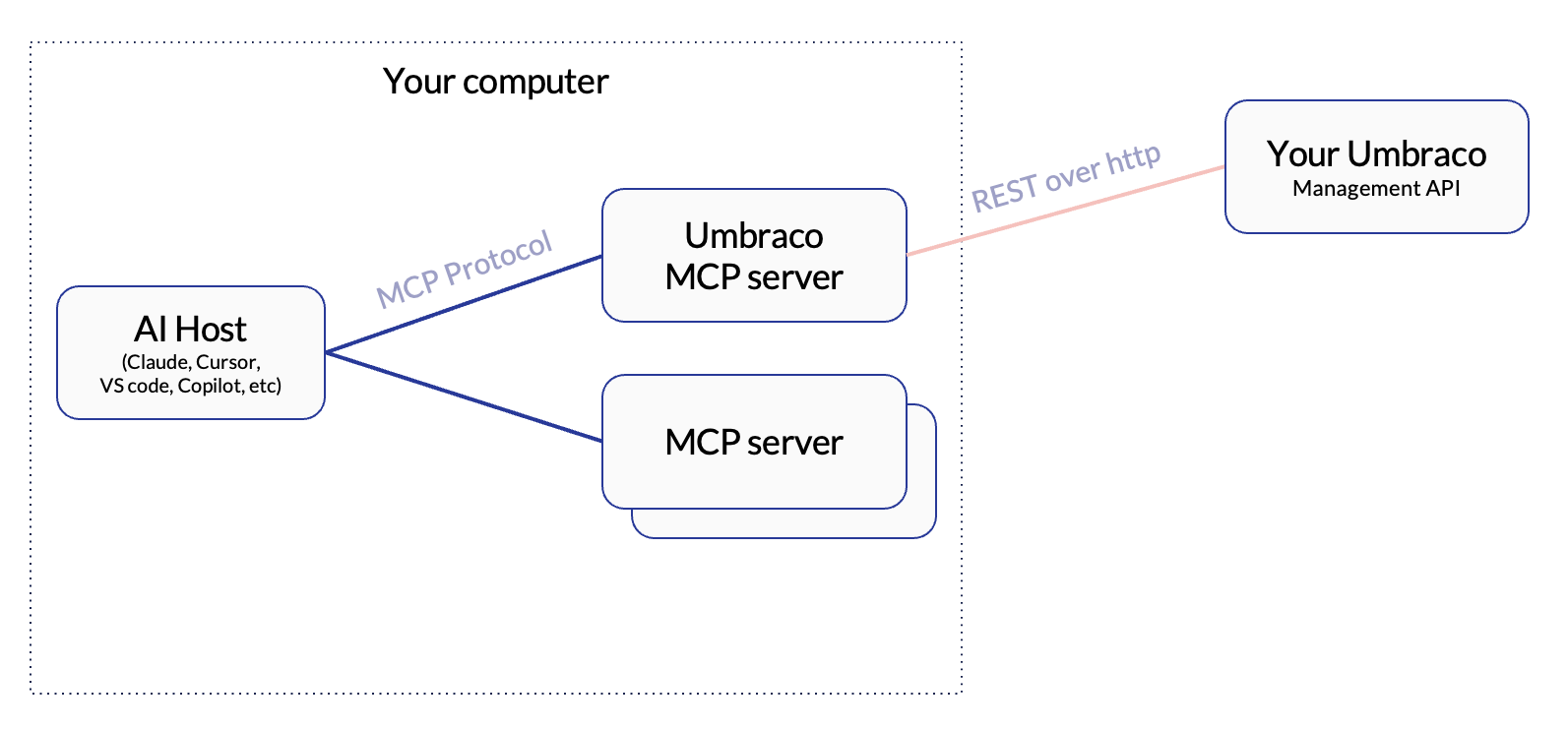
Umbraco MCP Server flow. Source: Umbraco
While MCP is rapidly approaching a less nascent posture, it’s still relatively fresh, and both brands and vendors are focused on discovering how to unlock value. Within the motion, Umbraco is taking a more controlled approach. As Filip said, other vendors are adamant about employing swarms of agents to do their bidding at a tactical level, but he sees more potential at a strategic level where Umbraco users wield greater control.
“I want one AI that I can use as a strategic advisor that can actually execute on my behalf,” he said, “not a million who can tell me what to do.”
Like so much of Umbraco’s innovation, a lot of the traction surrounding its broader AI initiatives and the investment in MCP came from the community. As Bolette reflected, it started at last year’s Codegarden, where they enrolled participation in this next wave of AI ideation.
“One of the things that I really like about this, from a product and product management perspective, is how we invited partners and the community to share the use cases they found around AI, and what they thought was beneficial for working with AI on top of Umbraco,” she explained. “Instead of assuming what the editors, users, or developers wanted from AI, we let it flourish up from the bottom, from the people that use it or build with it on an everyday basis. This project grew from the community and now it’s become something that we are taking in as part of the core product.”
As we acknowledged during our conversation, the insane rush to deploy these types of AI services has created a wake of low-value applications that agencies and customers have struggled with. I’ve spoken to multiple stakeholders across an array of organizations who have admitted that the AI tools in DXPs have (in some cases) fallen short of expectations. But Umbraco seems to be taking a measured approach and relying on a community feedback loop to improve outcomes.
On that feedback note, Filip explained how they’re dogfooding this new breed of agentic capabilities to perform advanced tasks that can help enhance performance.
“We're experimenting, having it look at log files to see what kind of errors are happening on the server, and we're actually pushing solutions out,” he said. “I think this is very powerful and very cool.”
Composing the future with orchestration
When I spoke to Filip prior to Codegarden, he teased the introduction of new orchestration capabilities on the horizon, something that would complement their gains in AI, search, and personalization.
Orchestration is a word that certainly has some hype surrounding it. Over the last few years, enterprises have endeavored to build composable stacks that tap legacy and siloed data from across systems to personalize and contextualize experiences in a centralized manner. Orchestration has become a more vital component for pulling all the levers within complex systems.
This has, of course, been largely the domain of MACH, although historically monolithic vendors have made fierce progress in adopting more modular product and headless capabilities. Despite the many benefits of composable, there’s been a bit of “MACHlash” in the market, where poor planning and misaligned expectations have resulted in project friction – and even failures.
I recently spoke to Sana Remekie of Conscia at the MACH Alliance’s annual conference in April, where we discussed the continued growth of orchestration as “the brain” of the stack. While Conscia’s DXO for personalization is a pure-play solution that’s deployable from AWS, DXP vendors are exploring ways to port more orchestration directly into their platforms.
“Umbraco Compose answers the question, ‘How do you really do composable and actually succeed?’ We've heard about the ‘composable regret’ people are talking about, and all the promises of composable are not really happening."
For Umbraco, the drive into orchestration is an entirely new market space, and Filip believes they have a leg up on innovation. As they announced at Codegarden, the new Umbraco Compose will provide a pathway to success by delivering on the promise of composable.
“Umbraco Compose answers the question, ‘How do you really do composable and actually succeed?’” he said. “We've heard about the ‘composable regret’ people are talking about, and all the promises of composable are not really happening. People were promised independence, and we just ended up with a whole lot more complexity and cost.”
Filip provided me with a brief history of time, and how disparate systems became part of pre-assembled DXPs and formed “spaghetti in the cloud.” As he reinforced, the growth of headless has largely been at the expense of editors and marketers. They’ve had a terrible experience despite all the advertised control. Meanwhile, the bowl of spaghetti has gotten bigger, more complex, and more expensive.
Composable has also delivered some unexpected consequences, such as the rise of “MACHoliths” and agency lock-in. With all of these existential challenges, Filip saw an opportunity to improve on the promise of flexible, scalable, and secure performance while being friendly to marketers.
As he explained, Umbraco Compose is a dedicated SaaS product targeted at enterprises, enabling them to ingest anything from any source and leverage schema as a relational backbone. It connects with third-party systems relatively seamlessly, and GraphQL acts as the flexible delivery conduit to frontend experiences, apps, and stores. The result is true independent orchestration, where even Umbraco’s CMS isn’t a required piece of the puzzle.
“You can have multiple brand websites, your app, your install monitors, your dashboards, whatever you want, and all of them get data from Compose,” he described. “We do this via GraphQL, so even if data comes from multiple sources, will, you can still perform GraphQL requests. With one request, you can actually get a page with products with prices on it, even though that data comes from three different systems. And you can choose whatever CMS you want, whatever PIM you want, whatever you have.”
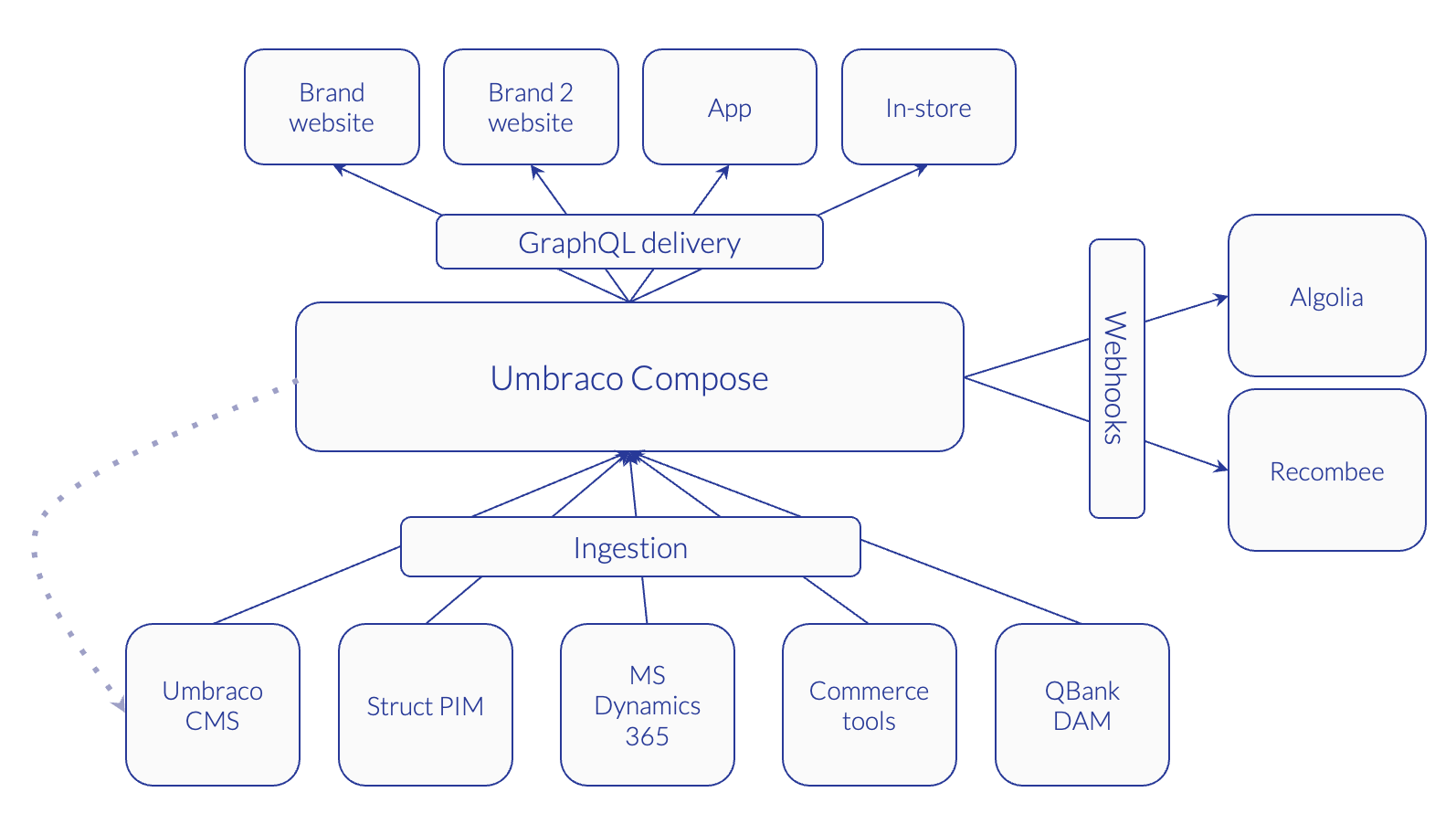
Umbraco Compose ecosystem. Source: Umbraco
As Filip further detailed, you can even leverage webhooks to search applications like Algolia, recommendation engines like Recombee, and other sources – and in turn, they don't need to know about your source systems either.
“Data can all flow through Umbraco Compose, and the beauty of it is that, since we know the middle products, and we know Umbraco CMS, we can build this beautiful bridge,” he said, smiling. “So the CMS doesn't need to know about the PIM in order to be able to make a product bigger or choose products from the PIM.”
While a PIM is one thing, Filip demoed the power of Compose using the most elemental example: a Google Sheet. As he illustrated, Umbraco’s delivery API and orchestration are unopinionated, making ingestion easy – even if you have an old system that just has webhooks, and the data isn’t ideally formatted.
“Imagine you have an old blog with 2000 articles, and you don't want to migrate that over to your CMS, but you want it to still be available,” he said. “It might make sense to do a one-off push to the delivery platform, and then your front-end person can build something that pulls the data from there.”
This is obviously a big focus for Umbraco, and reflective of the company’s evolving roadmap as it looks to enrich its core offerings and expand its value as a complete DXP ecosystem. While Compose has technically moved off the drawing board, it’s only available as a private beta this summer. Filip is anticipating a GA announcement later this year.
Sowing the seeds of love
Codegarden 2025 left us with a lot of big messages, but this one really stuck with me:
“The future is friendly.”
But is it?
We’ve got a lot of problems plaguing our world right now. And at the industry level, we’re wrestling with the negative disruption of AI and questions around the future relevance of websites.
Given these challenges, the future doesn’t always feel very hospitable. But that’s exactly why we need an event like this – a place that reminds us that we’re all connected, and when facing these problems, we’re better together.
To that end, Codegarden doesn’t fit the standard “box” for tech conferences. As a community-centered event, it feels decidedly more accessible, down-to-earth, and heart-focused. And any event where Lasse Fredslund dons a ukulele on stage is bound to end in some tearing and fearing. Add a six-foot-tall rabbit and a rambunctious keyboardist, and you’ve got a fun and engaging backdrop for exploring the future of digital experiences.

Lasse Fredslund at Codegarden 2025. Source: Umbraco
Codegarden has come a long way, as Filip said. “The first couple of years were five guys in a circle, sharing a big pizza and hanging out. But it's turned into a real thing now. And next year we're moving to Copenhagen, so it will be even more accessible and a little bit easier for people. At the core, it's still a tech event, but we keep building more stuff around it.”
Bolette gave a rousing presentation at the Boye & Company CMS Summit in Germany last month about the challenge of finding your 20 percent in a market where commoditization is a very real factor. Vendors are struggling not just to be different, but to be unique. I asked her what Umbraco’s 20 percent looks like through her product lens.
“Umbraco has always been built and designed to be a product that you can build upon, build how you want to build,” she said. “There's no lock-in around the choice of features you want to add. It’s very much up to you to decide how you want to build.”
Sustainability is another area where Umbraco shines. I did a deep analysis of the company’s annual Impact Report earlier this year, and it’s a glowing example of how a technology vendor can be commercially successful while focusing on sustainable practices. As Filip said, this will continue to be a focus.
“I love to see the difference we can make in the world,” he said glowingly. “We can teach people to have higher ambitions. I think being a source of inspiration for others, we try to be very transparent about how we do everything, and that's very much how we think as open source as a company, right? And we'll keep doing that.”
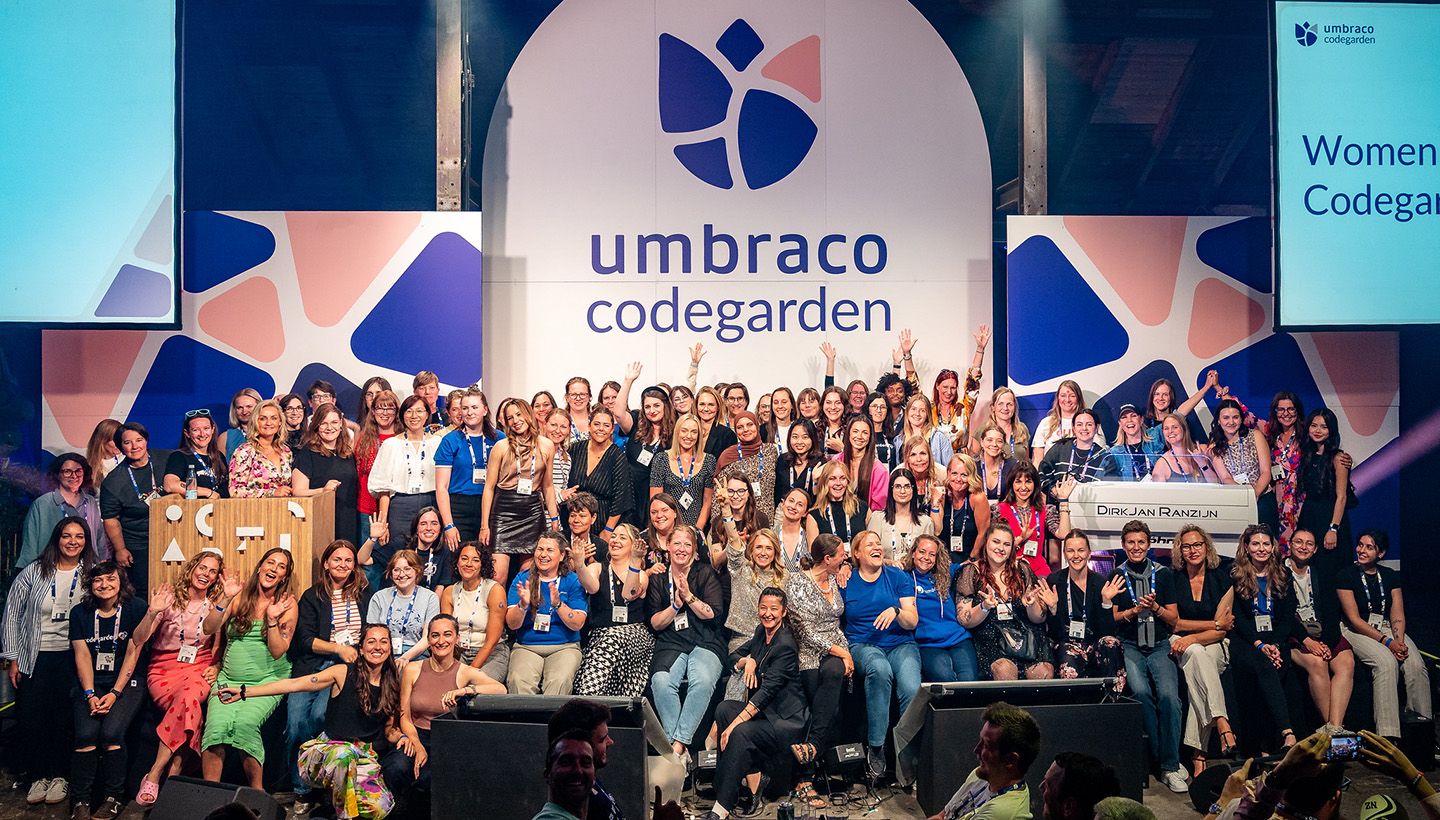
Women members of Codegarden 2025 assembled on stage. Source: Umbraco
And big props to Umbraco for highlighting the women of Codegarden, which is clearly a strong and growing contingent. In my opinion, it’s another testament to how the company is leaning into diversity as part of Bolette’s 20 percent. There’s always more work to do, but they’re setting yet another example for the industry.
Time flies. And with AI, things are flying faster than ever. That’s what makes Codegarden such a source of calm amid the chaos. It’s easy to see why this community is head over heels about Umbraco – and 20 years later, still sowing the seeds of love.
Looking for guidance on Umbraco? Talk to an expert.
Upcoming Events

CMS Connect 25
August 5-6, 2025 – Montreal, Canada
We are delighted to present the second annual summer edition of our signature global conference dedicated to the content management community! CMS Connect will be held again in beautiful Montreal, Canada, and feature a unique blend of masterclasses, insightful talks, interactive discussions, impactful learning sessions, and authentic networking opportunities. Join vendors, agencies, and customers from across our industry as we engage and collaborate around the future of content management – and hear from the top thought leaders at the only vendor-neutral, in-person conference exclusively focused on CMS. Space is limited for this event, so book your seats today.
